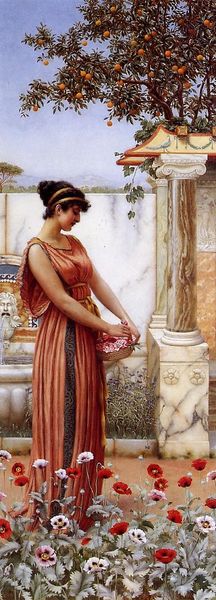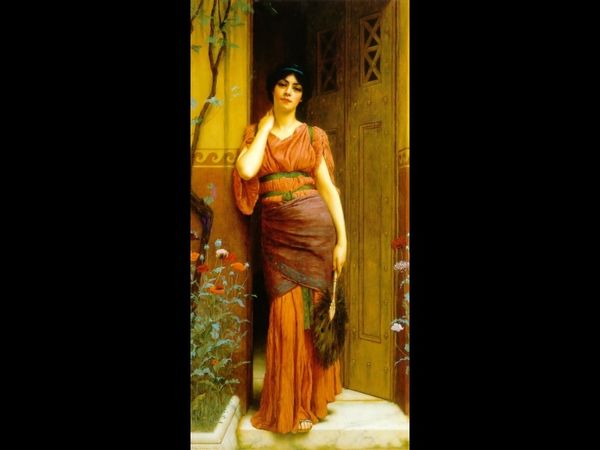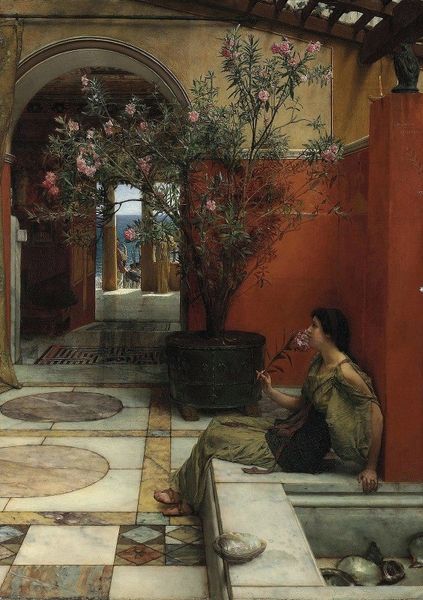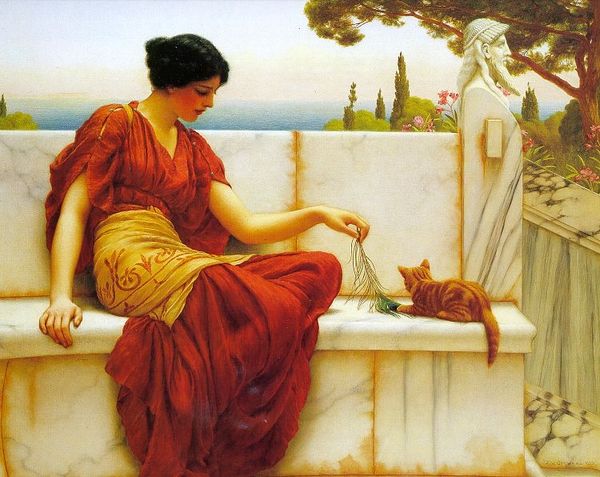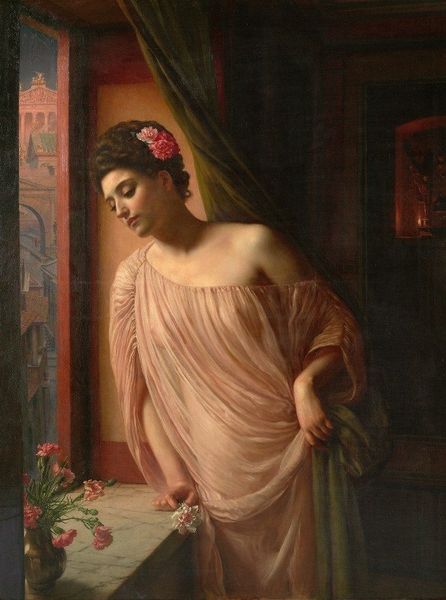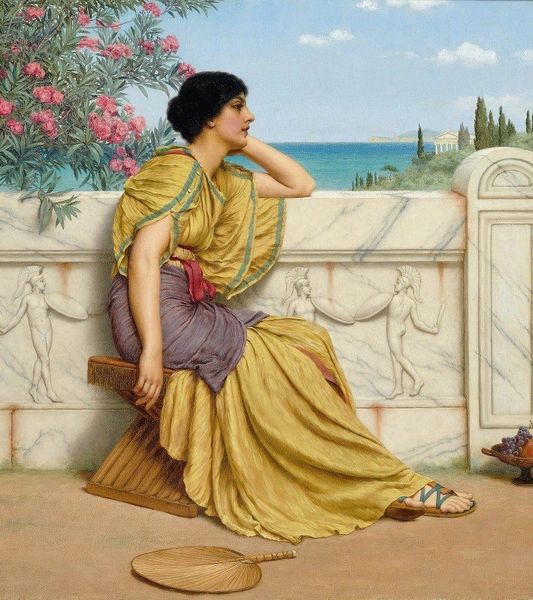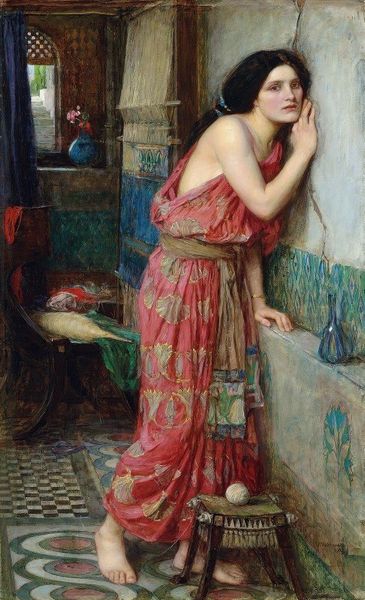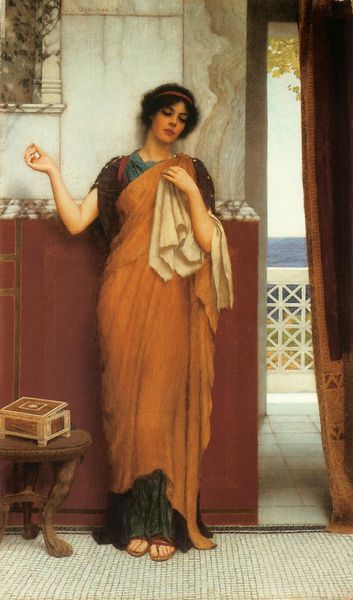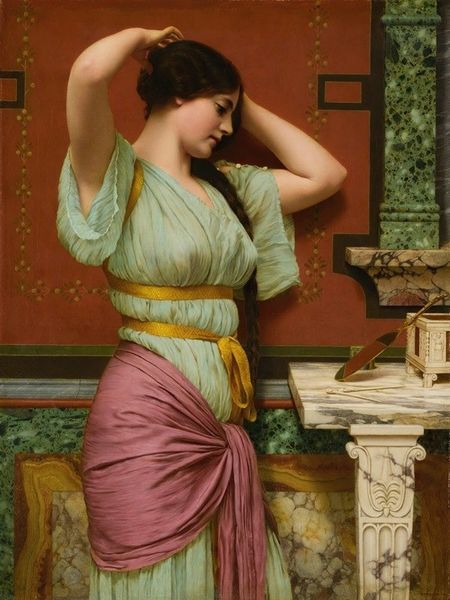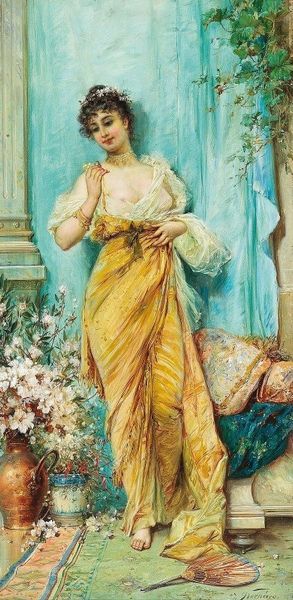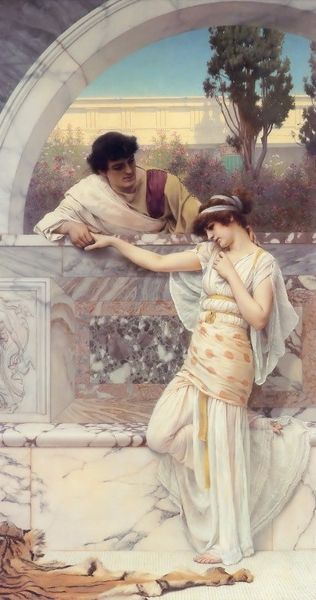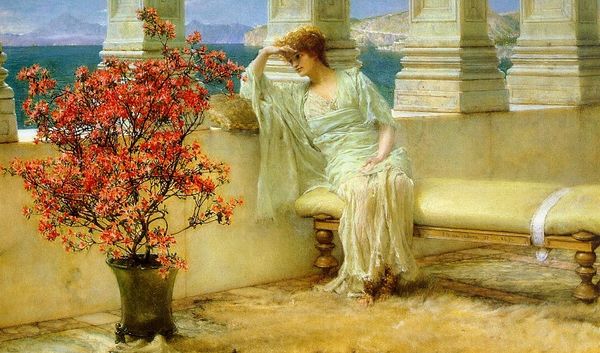
oil-paint
#
gouache
#
water colours
#
neoclassicism
#
oil-paint
#
landscape
#
classical-realism
#
oil painting
#
romanticism
#
history-painting
Copyright: Public Domain: Artvee
Editor: Right now, we’re looking at “The Bouquet,” painted in 1899 by John William Godward. The artist used oil on canvas to create the scene, and there is this woman, very classically posed. What I find most arresting is the tiger skin at her feet. How should we interpret that, do you think? Art Historian: It's fascinating, isn’t it? This painting, at first glance, appears to be an idyllic, timeless scene, steeped in Neoclassical ideals. However, elements like that tiger skin prompt us to ask deeper questions. Consider the historical context: late 19th-century Europe was a hotbed of colonial expansion. Could this tiger skin represent the exotic "other," a symbol of conquest and the objectification of faraway lands and people? Editor: So, it is maybe a sign of wealth and dominance. The woman doesn’t seem like a conqueror herself. Art Historian: Exactly! Think about how women were often depicted in art of this period – as passive figures, symbols of beauty and domesticity. How does placing her within this context of colonial power complicate or even challenge that traditional role? The bouquet she holds – is it a symbol of innocence or complicity? Does it point to a form of privilege sustained through colonial exploitation? Editor: I see what you mean. It changes my whole view of the image. I was so focused on the classical aesthetic that I overlooked these other cues. Art Historian: It's in noticing those visual tensions that we can begin to dismantle conventional readings of paintings like this. What begins as beauty reveals an uncomfortable history, compelling us to grapple with the artwork's role within the broader power structures of its time – and perhaps even today. Editor: Thanks for guiding me. I had only viewed the surface. I'll certainly remember to consider the historical context more closely in the future!
Comments
No comments
Be the first to comment and join the conversation on the ultimate creative platform.
